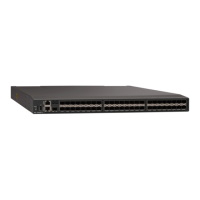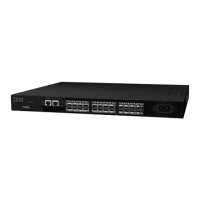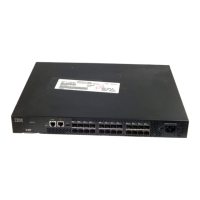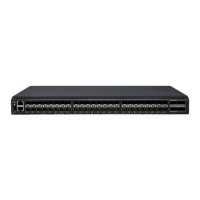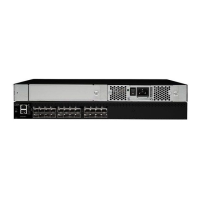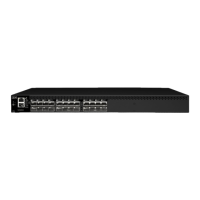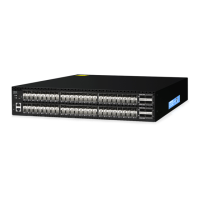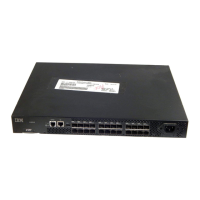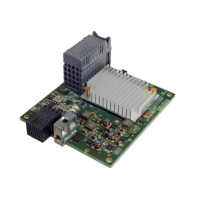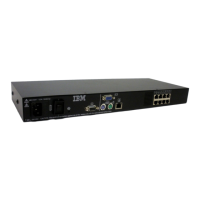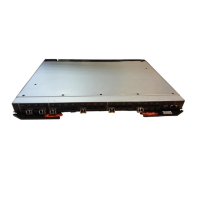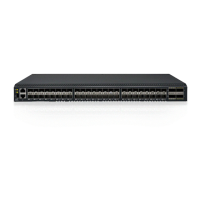Setting the time zone
To set the time zone, follow these steps.
1. Log into the switch using the default password, which is password.
2. Enter the tsTimeZone command as follows:
switch:admin> tstimezone [--interactive]/ [, timezone_fmt]
Use timezone_fmt to set the time zone by Country/City or by time zone ID,
such as MST.
The following example shows how to change the time zone to US/Mountain.
switch:admin> tstimezone
Time Zone : US/Pacific
switch:admin> tstimezone US/Mountain
switch:admin> tstimezone
Time Zone : US/Mountain
The following procedure describes how to set the current time zone using
interactive mode.
1. Enter the tsTimeZone command as follows:
switch:admin> tstimezone --interactive
2. You are prompted to select a general location.
Please identify a location so that time zone rules can be set correctly.
3. Enter the appropriate number or Ctrl+D to quit.
4. At the prompt, select a country location.
5. At the prompt, enter the appropriate number to specify the time zone region or
Ctrl+D to quit.
Synchronizing local time using NTP
Complete the following steps to synchronize the local time of the principal or
primary switch with that of an external NTP server.
1. Log into the switch using the default password, which is password.
2. Enter the tsClockServer command.
switch:admin> tsclockserver "<ntp1;ntp2>"
where ntp1 is the IP address or DNS name of the first NTP server, which the
switch must be able to access. The second ntp2 is the second NTP server and is
optional. The entire operand "<ntp1;ntp2>" is optional; by default, this value is
LOCL, which uses the local clock of the principal or primary switch as the
clock server.
The tsClockServer command accepts multiple server addresses in either IPv4,
IPv6, or DNS name formats. When multiple NTP server addresses are passed,
tsclockserver sets the first obtainable address as the active NTP server. The
others will be stored as backup servers that can take over if the active NTP
server fails. The principal or primary FCS switch synchronizes its time with the
NTP server every 64 seconds.
switch:admin> tsclockserver
LOCL
switch:admin> tsclockserver "132.163.135.131"
switch:admin> tsclockserver
132.163.135.131
switch:admin>
The following example shows how to set up more than one NTP server using a
DNS name:
18 SAN48B-5 Installation, Service, and User Guide
